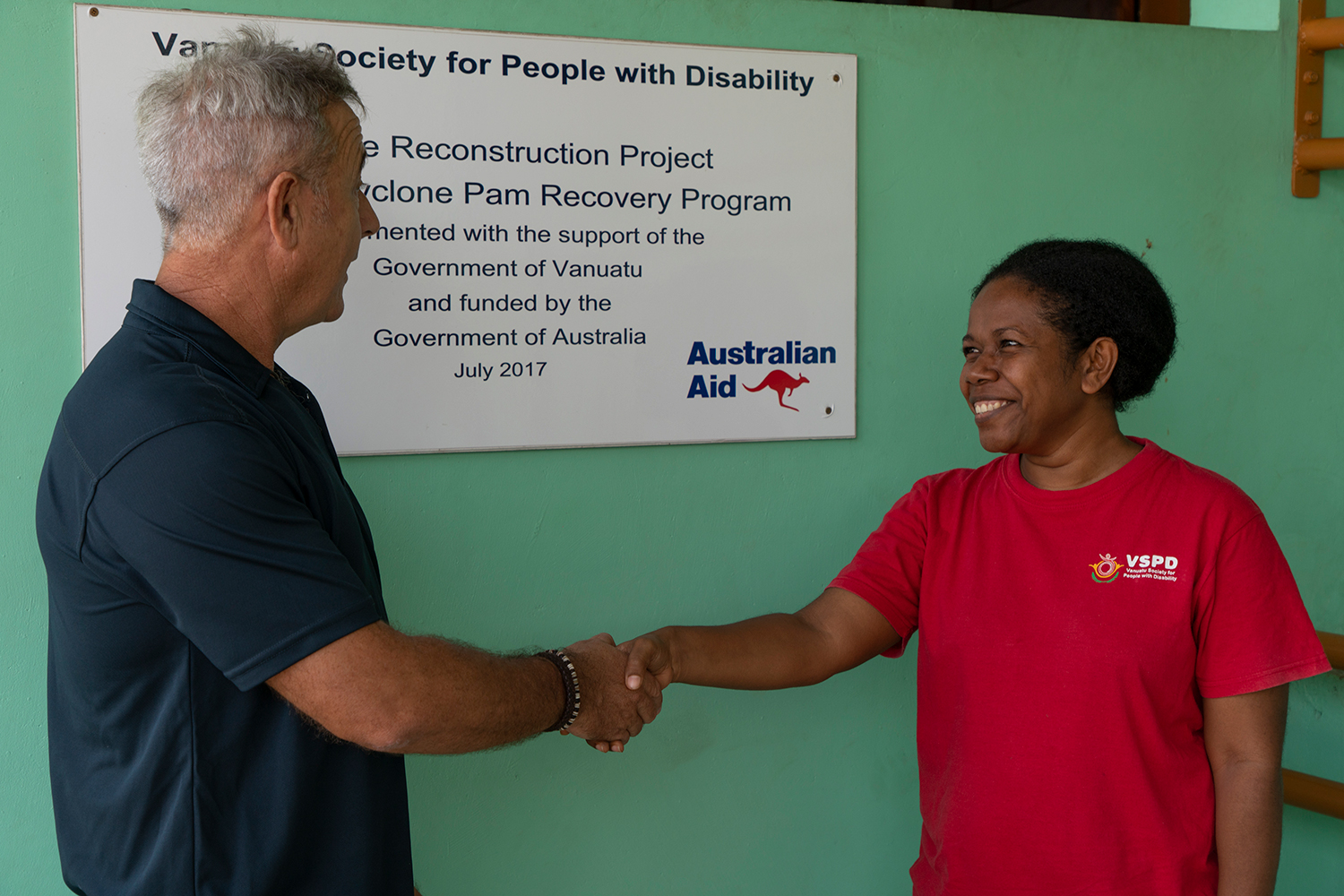The first World Engineering Day for Sustainable Development will be held 4 March 2020. To celebrate, we asked members of the profession how engineers can contribute to each of the 17 UN Sustainable Development Goals.
GOAL 9: INDUSTRIES, INNOVATION AND INFRASTRUCTURE
Investments in infrastructure – transport, irrigation, energy and information technology – are crucial to achieving sustainable development and empowering communities in many countries.
When the devastating Tropical Cyclone Pam struck the Pacific archipelago of Vanuatu in 2015, the United Nations estimated up to 90 per cent of buildings across the country were affected, with profound damage to public infrastructure including water supplies, government buildings, hospitals and schools.
Helping lead the recovery is civil engineer and Project Management Specialist Ted McDonnell. Deployed through the Australia Assists program, he is currently working inside the Ministry of Infrastructure and Public Utilities of the Government of Vanuatu.
There, he is leading the Public Building Recovery Program, co-funded by the Australian Government and the Government of Vanuatu.
The program focuses on implementing the repair, reconstruction and redevelopment of more than 65 public buildings including police housing, disability support services infrastructure, sports facilities, water supply, governance facilities and a range of other damaged buildings.
“When I arrived in Vanuatu in January 2016, the effects of TC Pam were still very visible on the streets of the capital Port Vila and on the island of Tanna in Tafea Province,” McDonnell said.
“Many buildings were missing all or part of their roofs; there was damage to building structure and internal damage due to water getting into the buildings.”
McDonnell is working within the Public Works Department’s Project Management Unit (PMU), which consists of an acting principal architect, procurement officer, financial officer and several contracted supervisors and consultants.
A collaborative effort
McDonnell’s PMU is working with more than 10 ministries and departments to implement a range of infrastructure projects. Given the breadth of damage, the Public Building Recovery Project is working across sectors to ensure that public construction needs are met in the community.
Describing the core objectives of the project, McDonnell said the main aim “is to repair, and/or reconstruct the facilities to the original state while ensuring that the facilities meet current building standards”.
“We’re also seeking opportunities wherever possible to ‘build back better’ and improve the facilities to meet current or future requirements.”
Where possible, McDonnell and the team have worked hard to include people with a disability in the construction process, and have liaised closely with disability advocacy groups to ensure new constructions are accessible to all.
By also prioritising the hire of small-scale contractors to complete the range of construction tasks required rather than larger operators, McDonnell has enabled the generation of hundreds of employment opportunities for Ni-Vanuatu locals.
“It’s always important to see recovery and reconstruction projects as an opportunity to deliver greater benefits to the host community than just the infrastructure outcomes,” McDonnell said.
“Helping them to improve construction techniques and company management improves the contractors’ ability to stand on their own two feet, bid for new work, grow and be successful.”

In May of 2018, Ted and the team achieved a huge milestone for the project when they handed 17 public buildings back to the Government of Vanuatu in Tafea. The project successfully reconstructed police housing, stations and accommodation buildings, as well as the Chief’s house on the island of Tanna, which were heavily damaged during Cyclone Pam.
“The handover of the buildings really enables community structure to be supported and enhanced. For example, the chief’s Nikoleten house enables local governance to be carried out in a building that has a roof, that has been repaired and refurbished,” McDonnell said.
“I overheard one of the police officers state that the police houses in Tanna are now the best facilities in the country. He was speaking with pride – that’s an outcome worth celebrating!”
Future resilience
In his time there, McDonnell has seen huge gains in the recovery of Vanuatu and remains optimistic about the future resilience of the community against natural disasters.
As the most disaster-prone country in the world, Vanuatu’s resilience can be a challenge to maintain, said McDonnell, but with long-term planning he believes projects like the Public Building Recovery Project will make a tangible difference.
“Hopefully Vanuatu will get to a point where local capacity has increased and the country will be able to manage the annual cycle of natural disasters,” he said.
This article was adapted from a version on the RedR Australia website. Read the original here.
Ready to celebrate engineers building a more sustainable world?